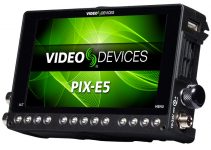Cinematography is quite literally the art of visualization through movement, as opposed to photography which is the art of writing with light. In that greek word κίνημα is all the essence of our craft: the moving image. It’s easy then to understand how important it is to have people moving around in your film, how incredibly strong and engaging a narrative can become once we start moving around with our talents and our camera.
Moving shots are engaging because they feel more realistic and less staged, thus drawing us into the flowing rhythm of the action. But preparing a scene where a talent moves around is not an easy task. We craft a perfect light on his or her face, and they step just right out of it. How can we solve the situation? Here we have a scene lighting breakdown by the Aputure team, and we can agree that those guys know more than something about lighting.
The scene we can see here is shot inside a studio, meaning the guys had plenty of room to set the lights as needed. That’s not usually the case with an indie production being shot on location, but then again, what we need to get from this video is the reasoning behind the choices made.
The script has an actor entering a room and crossing it while going around a sofa, where he finally sits. The room has a huge window on the back of the sofa and another one on the left side. The key light here comes through the main window: two 300D IIs are bounced right outside the window and then go through a diffusion taped right on the outside.
So, now the first strides are covered, but once in the left side angle, the talent gets dark, so a third light, a 300X in this case, has been diffused right outside the window on the side, and fills in the dark corner.
Having all the lights on the back once the movement is over, the actor is silhouetted. There comes a fourth light, a 120D II, that softened through a dome filling the talent from the front.
So, now we have all of the path filled with light, but that’s not all. We need to have all the fixtures emitting the right amount of light, and that is where the most important tool for any respectable DOP comes in: the light meter.
By measuring the light all across the path the actor will walk on, you can make sure that no light exceeds or is too low for the needed exposure.
The saying goes that the devil is in the details, right? To sell the shot perfectly, you need to add the small details that will make the difference between a cheap lighting and a captivating narrative.
That’s why there are two small tweaks added to the scene. A reflected 300D II on a mirror with some make-do gobos creates a light spill that makes the scene more real, just as the Aputure MC right outside the door that mimics a warm street light.
The last touch is moving the camera together with the subject. In this case, the guys used a dolly, but a small slider or a gimbal may do the trick on tighter locations or budgets. That was Aputure’s breakdown, and it was a good one. We could condense it in three key points:
- Use soft light trough all the scene
- Check power ratios with a light meter
- Check for details that mimic real lights
What do you think? Are there more key points to add? Let us know in the comments!
[source: Aputure]
Disclaimer: As an Amazon Associate partner and participant in B&H and Adorama Affiliate programmes, we earn a small comission from each purchase made through the affiliate links listed above at no additional cost to you.


